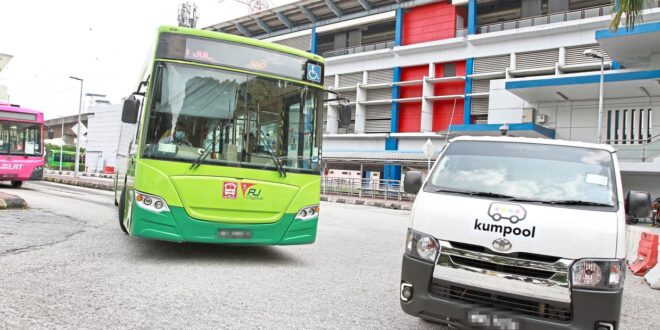IT is time the government realises that vans are the most ideal first- and last-mile commuter transport solution, and stop groping in the dark with impractical and more expensive solutions.
From day one when electric commuter trains were introduced, the idea has been mooted for vans, not buses to fill the gap.
There is no need for expensive experiments by Selangor government such as the heavily subsidised Direct Response Transit (DRT) concept, when the humble van offers a practical solution.
The large expensive buses, whether they cater to KTM, light rail or mass rapid transit (LRT/MRT) commuters, are not ideal because of local urban traffic conditions and narrow congested roads that result in break-downs, delays and poor service and costly maintenance.
Vans are better as they can carry eight to 10 passengers and can navigate through narrow roads of housing and industrial estates, commercial areas, villages and low-cost flats where the bulk of commuters live or work.
Those from upscale residential areas own their own vehicles and have no need for public transport.
I have been observing public buses for a long time and find that sole dependency on inefficient buses is the primary problem in the lack of people using public transport.
It is the first- and last-mile seamless connectivity and convenience that should inspire confidence in commuters to opt for public transport.
Had vans been introduced from the start, the use of public transport could have increased in popularity and benefitted the people.
The problem will be solved in a jiffy if MRT, LRT and KTM services had about 300 to 500 vans to ferry commuters in the Klang Valley.
The buses should be phased out when their lifespan ends.
Vans can pick passengers up right from doorstep if it rains.
Large families going for shopping on weekends can utilise vans to get to LRT or MRT stations.
Vans will motivate people to opt for public transport.
Moreover, a few hundred van operators can earn a living from these services if used in the cities and towns in the Klang Valley.
Vans used for commuter services should be regulated in terms of permitted number of passengers, be in good condition, insured and supervised by the authorities.
The drivers must have a good safety record, and charges can be fixed depending on distance.
An appropriate MRT or LRT logo should be emblazoned on the van for easy identification.
There are so many advantages that van-hailing can offer for first- and last-mile connectivity.
There is no cheaper, quicker and better solution than using vans, and B40 and M40 commuters will welcome this solution to help them get to their destinations in time.
V. THOMAS
Sungai Buloh, Selangor
 BeritaKini.biz Berita Viral Terkini di Malaysia
BeritaKini.biz Berita Viral Terkini di Malaysia





